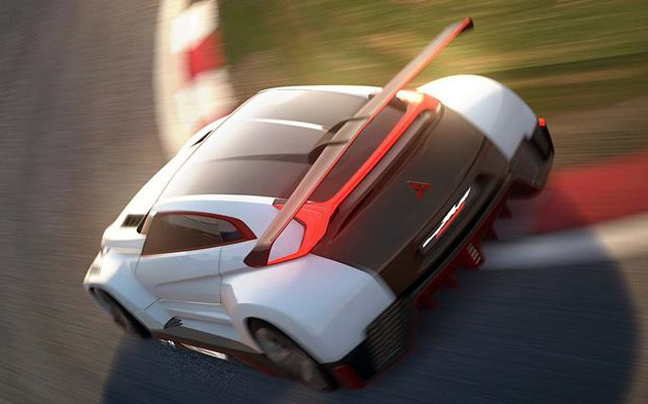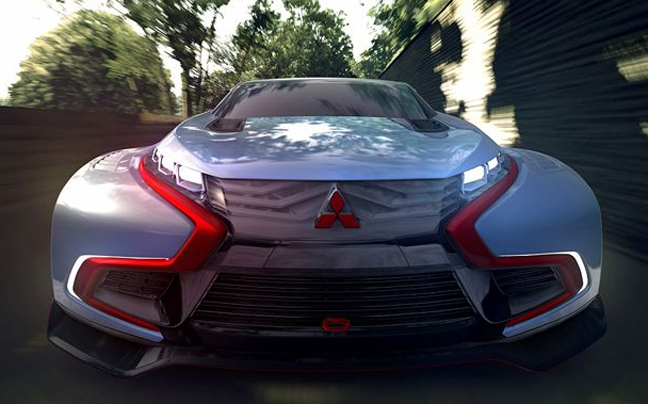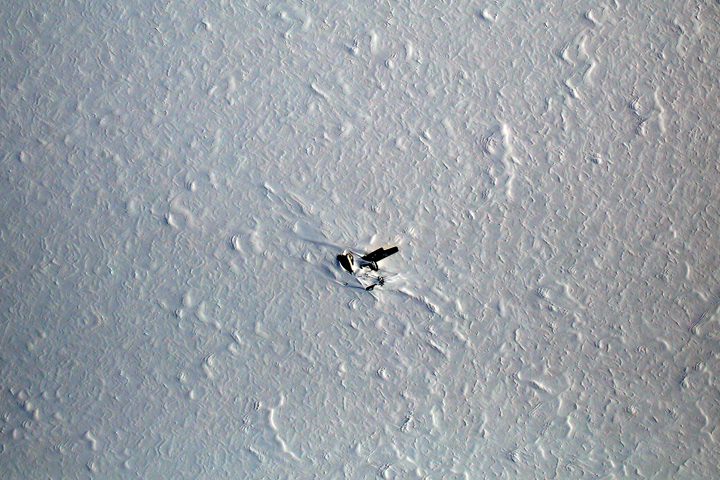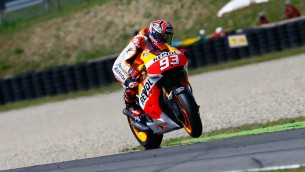Google Glass gun app would provide 'mind-blowing' ability to shoot around corners
Tracking Point, a Texas company that develops precision-tracking technology for firearms, announced via a YouTube video on Thursday that it has combined wearable technology, like Google Glass, with a Precision Guided Firearm (PGF) in a way that allows users to shoot around corners. The new combined system is called ShotView.A new Google Glass application would allow shooters to aim around corners while protecting them from return fire, the app developer claims.
“When paired with wearable technology, PGFs can provide unprecedented benefits to shooters, such as the ability to shoot around corners, from behind low walls, and from other positions that provide exceptional cover,” the company said in the video description. “Without PGF technology, such positions would be extremely difficult, if not impossible, to fire from.”
Vice’s Motherboard website compared the new technology with a jet’s heads-up display (HUD), a transparent display that allows pilots to read data without looking away from their normal view.“Much like a jet fighter's head's up display (HUD), TrackingPoint's wearable PGF app gives users the visual aids needed to take their aiming and shooting chops to previously impossible levels.”
Oren Schauble, Tracking Point’s director of marketing, told Motherboard in April, "Being able to shoot around corners and over hills is a little mind-blowing when you actually do it. Things keep on rolling."
The ShotView app works by streaming video from the tracking scope’s HUD to WiFi devices. “This enables direct device streaming for phones, tablets and many wearables. For additional networking, phones can connect via bluetooth and the Internet to share the apps data with additional devices,”the promotional video claims. Combining the PGF with Google Glass “allows for accurate shots around corners, from supported positions, behind-the-back, to the side and over barricades.”
The application is not available for the public yet, and a rep from the company told Huffington Post there are no plans to make the app available to consumers. Glass integration is still in the testing phase, Time reported.
The company began selling its (non-ShotView) PGFs to consumers in 2013. These rifles use a tracking scope and a guided trigger to allow users to reliably hit targets from 1,000 yards, according to their website. Their products have a variety of calibers, barrel lengths, chassis systems, applications and ammunitions.
Tracking Point already provides the US military with six of its so-called “smart” rifles, which come equipped with an internal computer system as well as sensors that gauge environmental factors to help a soldier aim. Google Glass is no stranger to the military, either, as a US Air Force research team is in the process of beta-testing Google Glass headsets for possible utilization in battlefield scenarios.
Tracking Point has announced that the military has purchased six of its so-called “smart” rifles, which are priced at between $10,000 and $27,000 each. That’s a hefty fee compared to the hundreds of dollars the Army pays to fit soldiers with the usual M-16 A2 rifle or M-4 Carbine, but the Tracking Point model reportedly comes fitted with aiming technology so advanced that the military may hope a $10,000 investment will help save money on ammunition.The US military is investing in an advanced firearm that comes equipped with an internal computer system as well as sensors that gauge environmental factors to help a soldier aim, according to a technology startup known as Tracking Point.
US Army testing precision guided ‘smart’ rifles - report
Tracking Point has announced that the military has purchased six of its so-called “smart” rifles, which are priced at between $10,000 and $27,000 each. That’s a hefty fee compared to the hundreds of dollars the Army pays to fit soldiers with the usual M-16 A2 rifle or M-4 Carbine, but the Tracking Point model reportedly comes fitted with aiming technology so advanced that the military may hope a $10,000 investment will help save money on ammunition.The US military is investing in an advanced firearm that comes equipped with an internal computer system as well as sensors that gauge environmental factors to help a soldier aim, according to a technology startup known as Tracking Point.
A shooter using a smart sniper rifle would merely need to tag a target viewable on a screen that’s visible when they are looking through the gun’s scope. The internal computer system will then tell the shooter exactly how to hold the gun and when to press the trigger.
Tracking Point displayed the weapon at the annual SHOT show weapons convention in Las Vegas, Nevada, earlier this month. DefenseTech.com reported that US Army officials bought six of the precision-guided firearms.
“Rifles can communicate with each other,” said Oren Schauble, a company marketing official. “We can enable a more information-driven combat in the sense that you can tag targets. You can pass off those targets to someone else with a scope. There’s a whole layer of communication that comes with having a rifle that can designate and track targets.”
Part of the motivation behind developing the precision-guided rifle, the company said, is that battlefields are becoming increasingly complex and, more importantly, connected. A Linux-powered computer in the gun scope collects ballistic data, battlefield images, and records atmospheric conditions such as cant, inclination, and even the tilt of the earth at that precise moment.
Schauble said the company has sold approximately 500 guns to a clientele that includes wealthy collectors and safari hunters.
The guns are also wireless, which means the footage and information can be live-streamed to a smart phone, tablet, or laptop.
“The only way to guarantee accuracy is to control all the variables,” Scott Calvin, a Tracking Point representative, told Defense Tech. The only major factor that the gun cannot track is wind speed, which must be entered manually, Calvin added.
As with any new product that has its proponents, there are skeptics who assert that the technology has gone too far by eliminating the need for patience and calm in a high-pressure situation.
“It’s the traditional shooting fish in a barrel or the sitting duck,” hunter Chris Wilbratte told NPR. “I mean, there’s no skill in it, right? It’s just you point, you let the weapon system do its thing and you pull the trigger and now you’ve killed a deer. There’s no skill.”
West Point military academy graduate and Vietnam War veteran Chris Frandsen said the Tracking Point gun should be prohibited in the civilian world because a criminal could use it and potentially remain undetected from a faraway distance.
“Where we have mental health issues, where we have children that are disassociated from society early on, when we have terrorists who have political cards to play, we have to restrict weapons that make them more efficient in terrorizing the population,” he said.































